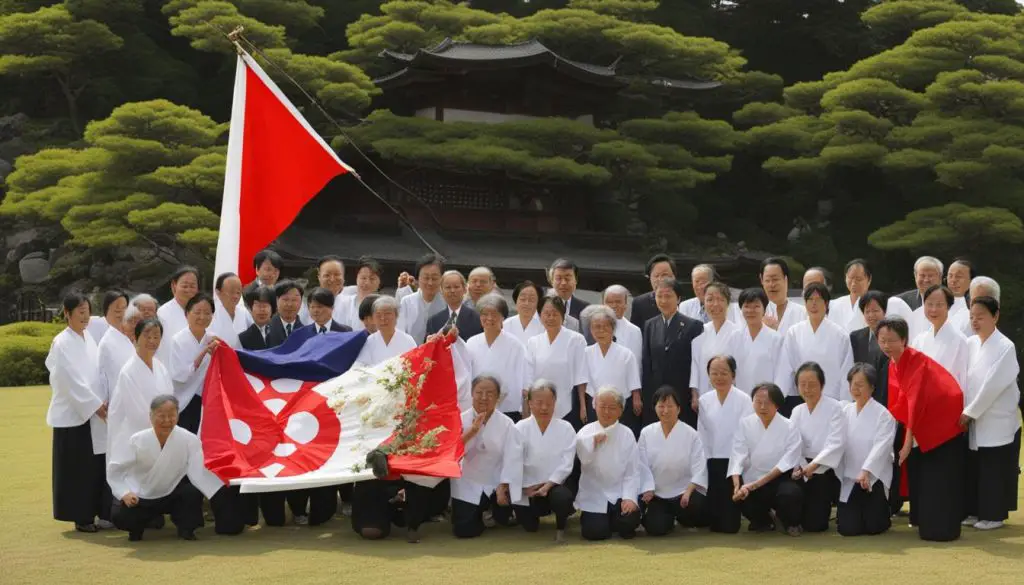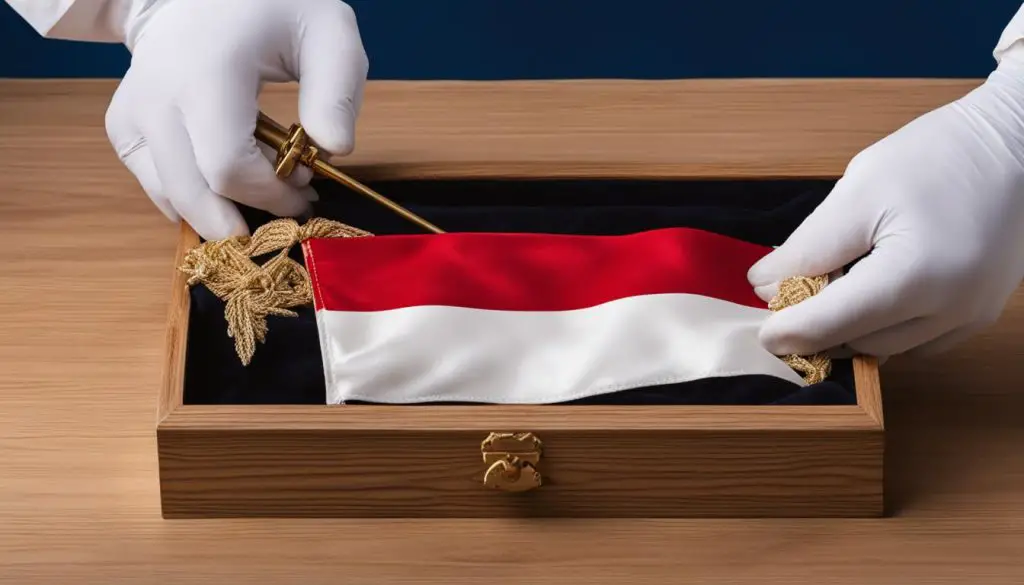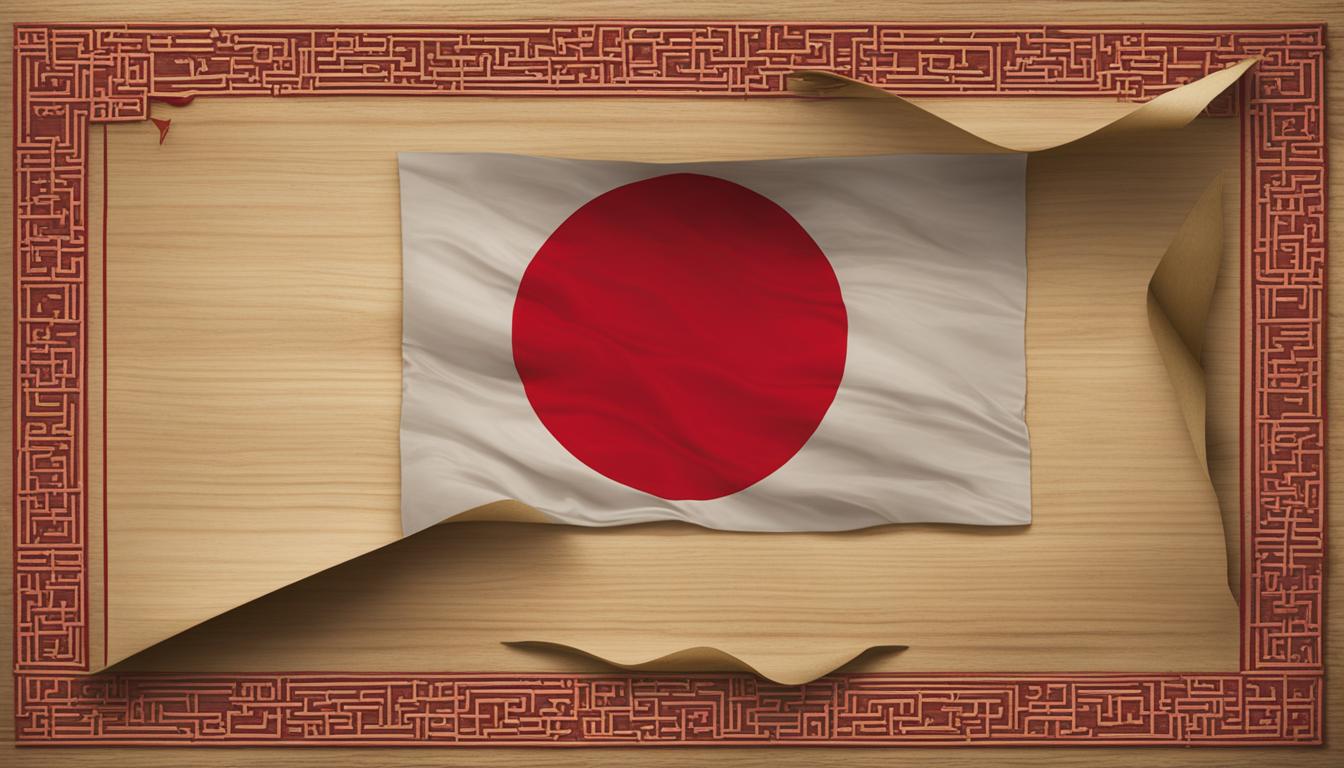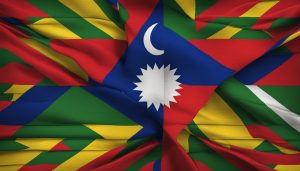Returning a Japanese Good Luck Flag can be a meaningful and respectful process. By following the right steps, you can ensure a successful return and honor the wishes of the soldier and their family.
Contents
- 1 Understanding the Cultural Significance of Good Luck Flags
- 2 Challenges Faced by Museums and Collectors
- 3 The Role of the Obon Society in Repatriation Efforts
- 4 Steps to Properly Return a Japanese Good Luck Flag
- 5 The Impact of Restitution Efforts
- 6 Museum Contributions and Support
- 7 Conclusion
- 8 FAQ
- 8.1 What is a Japanese Good Luck Flag?
- 8.2 Why is it important to understand the cultural significance of Good Luck Flags?
- 8.3 What challenges do museums and collectors face when trying to return Good Luck Flags?
- 8.4 What is the role of the Obon Society in repatriation efforts?
- 8.5 What steps should I follow to properly return a Japanese Good Luck Flag?
- 8.6 What impact do restitution efforts have on Japanese families and veterans?
- 8.7 How can museums support the repatriation of Japanese Good Luck Flags?
- 8.8 How does returning a Japanese Good Luck Flag contribute to the preservation of cultural heritage?
- 9 Source Links
Key Takeaways:
- Returning a Japanese Good Luck Flag requires careful consideration and adherence to certain steps.
- Understanding the cultural significance of Good Luck Flags is crucial for a respectful return process.
- Restitution efforts for Japanese Good Luck Flags have a significant impact on both Japanese families and Allied and American veterans.
- Museums play a vital role in supporting the repatriation of Japanese Good Luck Flags.
- By following the steps outlined in this guide and seeking the support of organizations like the Obon Society, you can successfully return a Japanese Good Luck Flag and contribute to the preservation of cultural heritage.
Understanding the Cultural Significance of Good Luck Flags
Good Luck Flags, also known as Yosegaki Hinomaru, were personal flags carried by Japanese soldiers during World War II. These flags served as symbols of protection and carried deep cultural significance for the soldiers and their families. The practice of signing and decorating the flags was believed to imbue them with spiritual power, providing luck and safety to the soldiers on the battlefield.
The flags were typically inscribed with messages of support, prayers, and well-wishes from family members, friends, and even entire communities. Each flag was a heartfelt expression of love, hope, and encouragement, meant to remind the soldiers of their loved ones back home and provide strength in times of adversity.
Returning a Yosegaki Hinomaru is not only about returning an object; it is about acknowledging and respecting the cultural and emotional significance it holds. By understanding these historical and cultural aspects, you can approach the return process with the sensitivity and reverence it deserves.
Table: Cultural Significance of Good Luck Flags
| Symbolism | Meaning |
|---|---|
| Red Sun (Hinomaru) | Symbolizes the Japanese flag and nation |
| Messages and Signatures | Expressions of support, prayers, and well-wishes from family and friends |
| Decorations and Symbols | Depicts various motifs such as cherry blossoms, dragons, and military equipment |
| Spiritual Power | Believed to protect and bring luck to the soldiers on the battlefield |
The cultural significance of Good Luck Flags goes beyond their physical form. These flags represent a connection between the past and the present, serving as tangible reminders of the individuals who served during World War II.
“Returning a Yosegaki Hinomaru is an opportunity to honor the sacrifices made by the soldiers and their families. It is a way to bridge the gap between history and memory, ensuring that their stories are not forgotten.”
By understanding the cultural importance of Good Luck Flags, we can approach their return process with empathy, respect, and a deep appreciation for the human stories they hold.
Challenges Faced by Museums and Collectors
Returning Japanese Good Luck Flags, also known as Yosegaki Hinomaru, poses unique challenges for museums and collectors. These flags have historical and cultural significance as they were personal belongings of Japanese soldiers during World War II. However, many of these flags were looted during the war and ended up in the possession of veterans and their families. As a result, the return of these flags is not only a matter of cultural heritage but also legality and ethics.
Museums and collectors face the challenge of navigating the complexities surrounding the repatriation process. These flags are considered cultural heritage objects that were illegally obtained, and their return involves legal considerations. Experts in museum ethics and international law must be consulted to ensure that the return process follows the appropriate regulations and guidelines.
Additionally, identifying the rightful owners of the Good Luck Flags can be a daunting task. Many of these flags are not accompanied by clear documentation, and their origin and ownership history may be unclear. Thorough research and collaboration with organizations such as the Obon Society can help in tracing the flags’ provenance and finding the families of the original owners.
The preservation and repatriation of Japanese Good Luck Flags require a concerted effort from museums, collectors, and relevant organizations. By working together and addressing these challenges, we can ensure that these cultural artifacts are returned to their rightful owners and their historical and sentimental value is properly honored.
| Challenges Faced by Museums and Collectors |
|---|
| Looting of Japanese Good Luck Flags during World War II |
| Legal and ethical considerations |
| Identifying the rightful owners |
| Research and collaboration with organizations |
The Role of the Obon Society in Repatriation Efforts
The Obon Society plays a crucial role in the repatriation of Japanese Good Luck Flags, also known as Yosegaki Hinomaru. This non-profit organization specializes in collecting, researching, and facilitating the return of these flags to their rightful owners in Japan. By bridging the gap between Japanese families and Allied and American veterans, the Obon Society ensures a smooth and respectful repatriation process.
One of the key methods for sending back a Japanese Good Luck Flag is through the assistance of the Obon Society. They provide guidance and support to individuals and organizations interested in returning these flags. Through their expertise and network, they help track down the families of fallen Japanese soldiers and facilitate the return of the flags.
“The Obon Society is dedicated to connecting families with the memory and legacy of their loved ones who served in World War II. By returning these flags, we help foster understanding and healing between different cultures and honor the sacrifices made during the war,” says John Powers, the founder of the Obon Society.
Returning a Yosegaki Hinomaru to Japan involves contacting the Obon Society and sharing information about the flag, such as the soldier’s name, unit, and any accompanying messages or signatures. The society conducts thorough research and analysis to verify the authenticity of the flag and locate the rightful family members. They then facilitate the return process by handling the necessary documentation, arranging for shipping, and ensuring the flag reaches its destination safely.

The Obon Society’s commitment to repatriating Japanese Good Luck Flags helps preserve the cultural heritage of both Japan and the countries where these flags have been held. By working with organizations like the Obon Society, individuals can make a meaningful contribution to reconciliation and healing, ensuring that these important artifacts find their way back home.
Steps to Properly Return a Japanese Good Luck Flag
If you have decided to return a Japanese Good Luck Flag and honor the wishes of the soldier and their family, it is important to follow the proper steps. By doing so, you can ensure a respectful and successful return process. Here are the key steps to consider:
- Research the flag’s origin: Start by researching the flag’s history and identifying any potential family members or descendants who may be interested in its return. This can involve contacting organizations like the Obon Society or conducting online research to gather information.
- Contact the Obon Society: Reach out to the Obon Society or other relevant organizations specializing in Japanese Good Luck Flag repatriation. They can provide guidance, resources, and support throughout the process, ensuring that the flag reaches its rightful owners.
- Provide necessary documentation: Prepare any necessary documentation, such as proof of ownership, photographs, or any other relevant information that can help validate the flag’s return. This ensures transparency and legitimacy in the repatriation process.
- Arrange for proper shipping and handling: Once all the necessary preparations are in place, you will need to arrange for the safe shipping and handling of the flag back to its rightful owners. Consult with the Obon Society or relevant organizations to ensure that the flag is packaged securely and sent via a reputable shipping service.
By following these steps, you can contribute to the proper return of a Japanese Good Luck Flag and the preservation of cultural heritage. Remember, the process may require patience and persistence, but the impact of your efforts will be invaluable.
Table: Key Steps to Return a Japanese Good Luck Flag
| Steps | Description |
|---|---|
| Research the flag’s origin | Gather information about the flag’s history and potential family members or descendants. |
| Contact the Obon Society | Reach out to the Obon Society or relevant organizations for guidance and support. |
| Provide necessary documentation | Prepare and present any required documentation to validate the flag’s return. |
| Arrange for proper shipping and handling | Ensure the secure packaging and delivery of the flag back to its rightful owners. |
Quote:
“Returning a Japanese Good Luck Flag is not just about sending back an object, but about honoring the memory and sacrifices of those who fought in the war.”
By following these steps and leveraging the support of organizations like the Obon Society, you can help facilitate the respectful return of Japanese Good Luck Flags and play a part in the restitution efforts.
The Impact of Restitution Efforts
The restitution efforts for Japanese Good Luck Flags have had a profound impact on both Japanese families and Allied and American veterans. The return of these flags brings closure and allows families to honor the memory of their loved ones who served in the war. It also serves as a way for veterans to reconcile the past and find healing.
The repatriation of these flags has provided a sense of closure for Japanese families. By receiving the flags back, they can finally pay their respects and acknowledge the sacrifices made by their ancestors. The return of these cultural artifacts offers a tangible connection to their history and brings comfort to those who have longed to have a piece of their family’s legacy back in their possession.
“Receiving my grandfather’s Good Luck Flag meant the world to me. It was a symbol of his bravery and sacrifice. Now, I can honor him properly and keep his memory alive.”
For veterans, participating in restitution efforts is a way to give back and make amends for the past. Many veterans have come forward to return these flags voluntarily, recognizing the significance they hold for Japanese families. By taking part in the repatriation process, veterans can contribute to the healing process and foster understanding between nations.
The impact of restitution efforts goes beyond the individual families and veterans involved. It also plays a crucial role in preserving cultural heritage. The return of these flags allows for the proper documentation and conservation of these artifacts, ensuring that future generations can learn from and appreciate their historical significance.

The Emotional Value of Restitution
Restitution efforts are not solely about returning an object; they carry immense emotional value. When a Japanese Good Luck Flag is returned, it represents a healing gesture in acknowledging the sacrifices made during World War II. The act of returning the flag is a powerful symbol of reconciliation, compassion, and empathy.
By participating in the restitution process, individuals and organizations contribute to building bridges between nations and promoting understanding. These efforts help foster a shared sense of humanity, transcending the boundaries of time and nationality.
The impact of restitution efforts is far-reaching, providing closure to families, promoting healing for veterans, and preserving cultural heritage for future generations. Through the collective efforts of individuals, organizations, and museums, the return of Japanese Good Luck Flags continues to bring solace and honor to those affected by the war.
Museum Contributions and Support
Museums play a crucial role in supporting the repatriation of Japanese Good Luck Flags. These institutions bring expertise, research, and valuable resources to the table, making the return process smoother and more efficient. With their extensive collections and knowledgeable staff, museums can provide critical assistance to individuals and organizations seeking to send back these significant cultural artifacts.
One way museums contribute is by offering guidance on repatriation instructions. They can provide valuable insights into the legal and ethical considerations surrounding the return of Japanese Good Luck Flags. Additionally, museums can help individuals navigate the necessary paperwork and documentation required for a successful repatriation process.
Museums also serve as intermediaries, connecting individuals and organizations with relevant contacts. By leveraging their networks, museums can help individuals locate the appropriate channels for sending back Japanese Good Luck Flags. This support is invaluable, as it ensures that the flags are returned to the right recipients in Japan.
Furthermore, museums can assist in preserving the history and cultural significance of these flags. Through research and documentation, they contribute to the comprehensive understanding of these artifacts and their place in World War II history. By actively participating in the repatriation process, museums help preserve the memory and honor the sacrifices made by soldiers and their families.
Overall, museums play an essential role in facilitating the repatriation of Japanese Good Luck Flags. Through their contributions and support, they ensure that these cultural artifacts are returned with respect and adherence to legal and ethical considerations.
Conclusion
Returning a Japanese Good Luck Flag is a meaningful and respectful process that allows you to honor the memory and sacrifices of those who fought in the war. By following the steps outlined in this guide and seeking the support of organizations like the Obon Society, you can successfully return a Japanese Good Luck Flag and contribute to the preservation of cultural heritage.
Understanding the cultural significance of Good Luck Flags, also known as Yosegaki Hinomaru, is essential for a respectful return process. These flags were personal and carried messages of support from family and friends. By returning them, you are honoring the wishes of the soldier and their family.
To ensure a successful return, it is crucial to navigate the unique challenges faced by museums and collectors. These flags are considered cultural heritage objects that were illegally obtained, and it is important to adhere to a legal and ethical return process. Organizations like the Obon Society play a vital role in repatriation efforts by facilitating communication and assisting with research.
Remember, the act of returning a Japanese Good Luck Flag is not just about sending back an object; it is about paying tribute to the individuals who fought during World War II. By following the steps provided in this guide and embracing the support available, you can make a significant contribution to the repatriation of these important artifacts.
FAQ
What is a Japanese Good Luck Flag?
A Japanese Good Luck Flag, also known as Yosegaki Hinomaru, is a personal flag carried by Japanese soldiers during World War II. These flags often have messages of support and well-wishes written on them by family and friends.
Why is it important to understand the cultural significance of Good Luck Flags?
Understanding the cultural significance of Good Luck Flags is crucial for a respectful return process. These flags hold deep meaning for Japanese families, and returning them with proper respect is essential.
What challenges do museums and collectors face when trying to return Good Luck Flags?
Good Luck Flags are considered cultural heritage objects that were often illegally obtained during the war. This presents unique challenges for museums and collectors in returning them. Navigating the legal and ethical complexities is necessary for a successful return.
What is the role of the Obon Society in repatriation efforts?
The Obon Society is a non-profit organization that specializes in collecting, researching, and repatriating Japanese Good Luck Flags. They work to facilitate the return of these flags by connecting Japanese families and Allied and American veterans.
What steps should I follow to properly return a Japanese Good Luck Flag?
To properly return a Japanese Good Luck Flag, it is important to research the flag’s origin, contact organizations like the Obon Society, provide necessary documentation, and arrange for proper shipping and handling.
What impact do restitution efforts have on Japanese families and veterans?
The return of Japanese Good Luck Flags brings closure and allows Japanese families to honor the memory of their loved ones. For veterans, participating in restitution efforts allows them to reconcile the past and foster healing.
How can museums support the repatriation of Japanese Good Luck Flags?
Museums play a vital role in supporting the repatriation process. They can provide expertise, research, and resources to facilitate the return of Japanese Good Luck Flags.
How does returning a Japanese Good Luck Flag contribute to the preservation of cultural heritage?
Returning a Japanese Good Luck Flag is not just about sending back an object, but about honoring the memory and sacrifices of those who fought in the war. By properly returning these flags, cultural heritage is preserved and respected.





